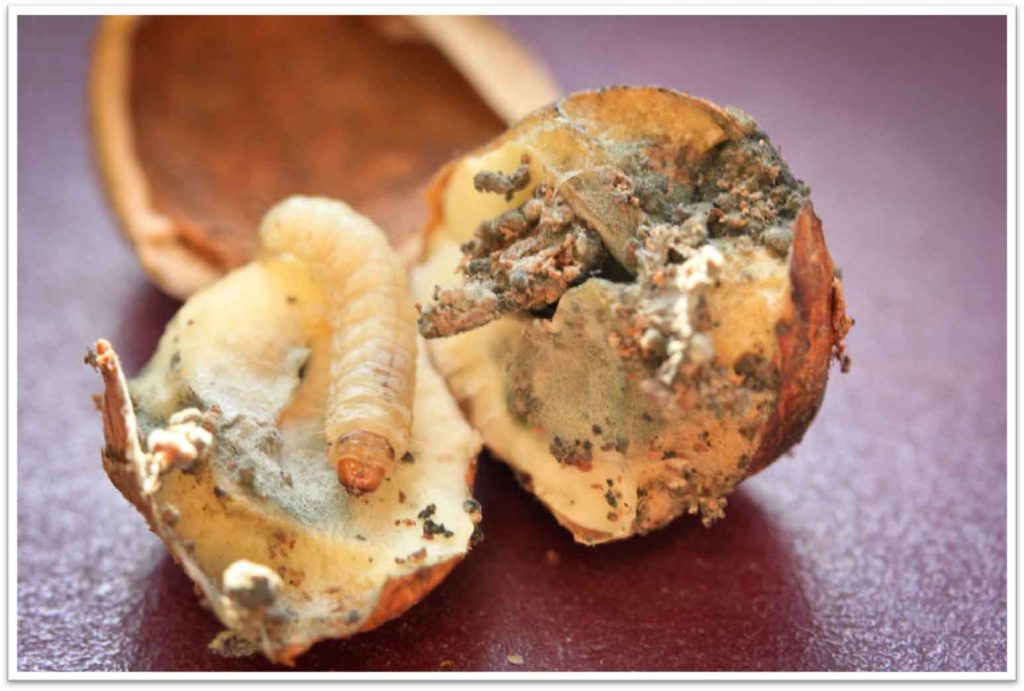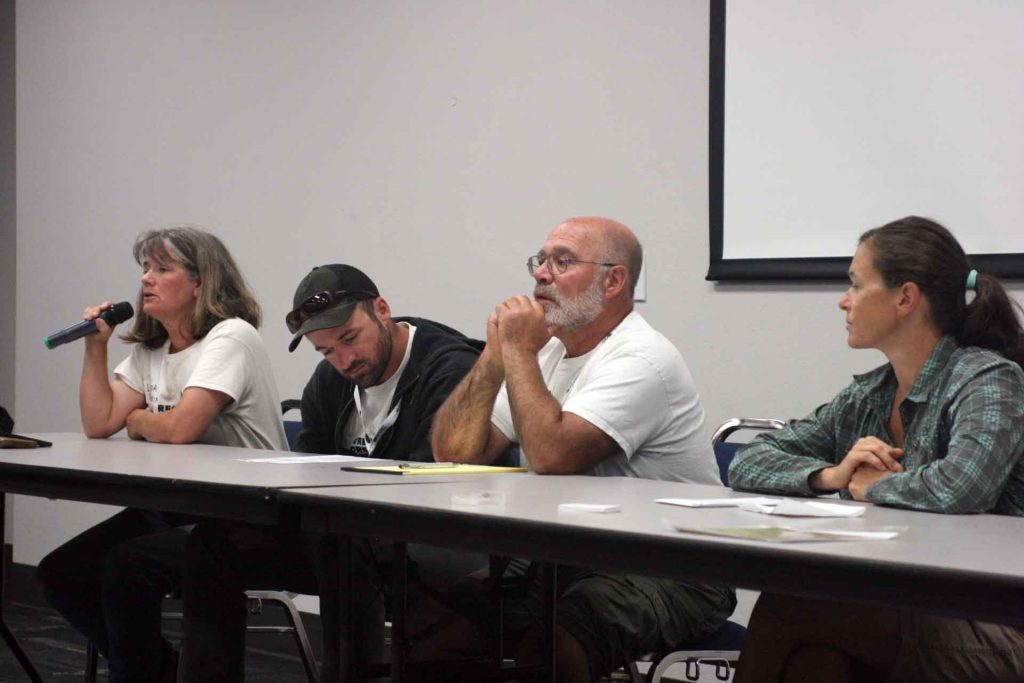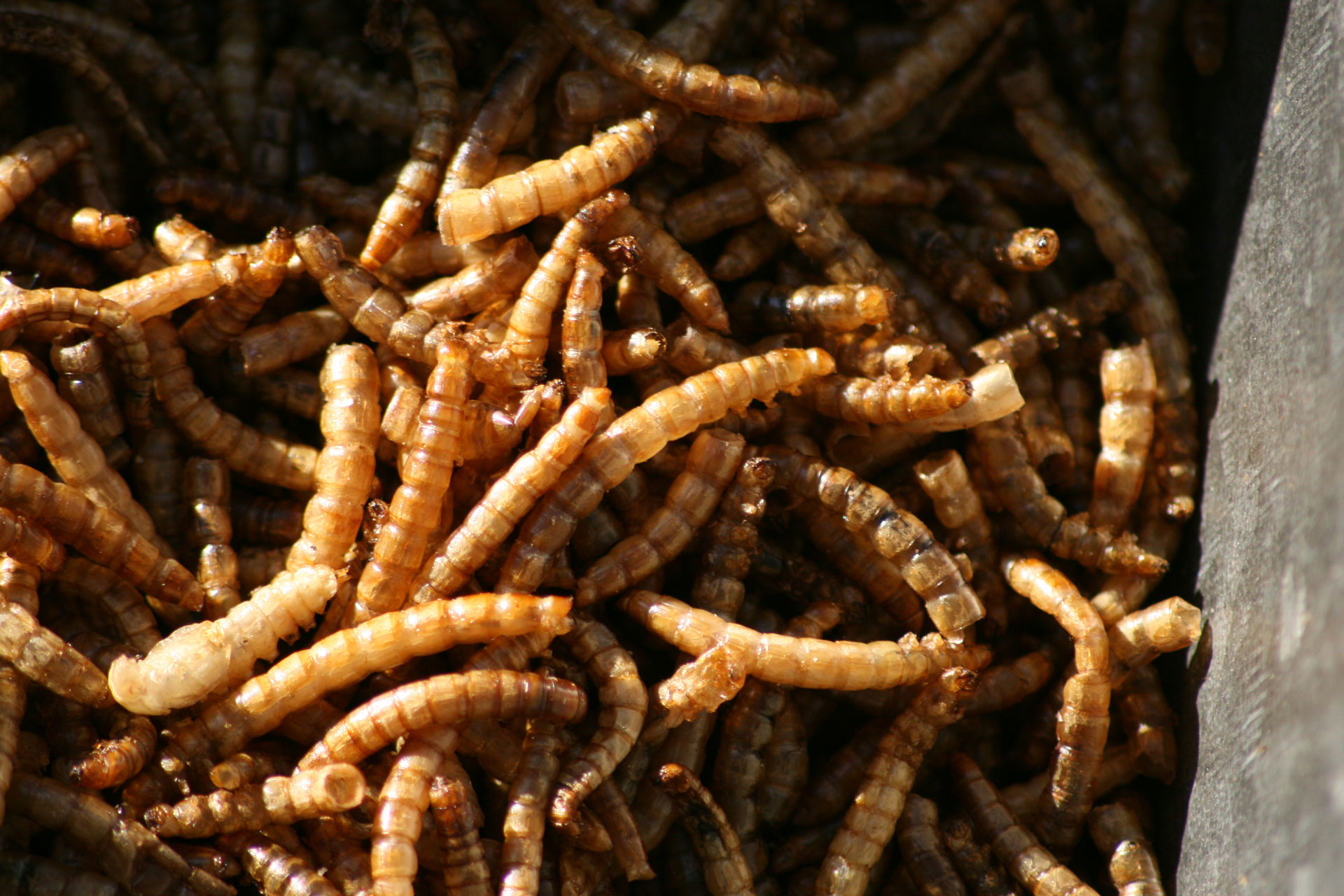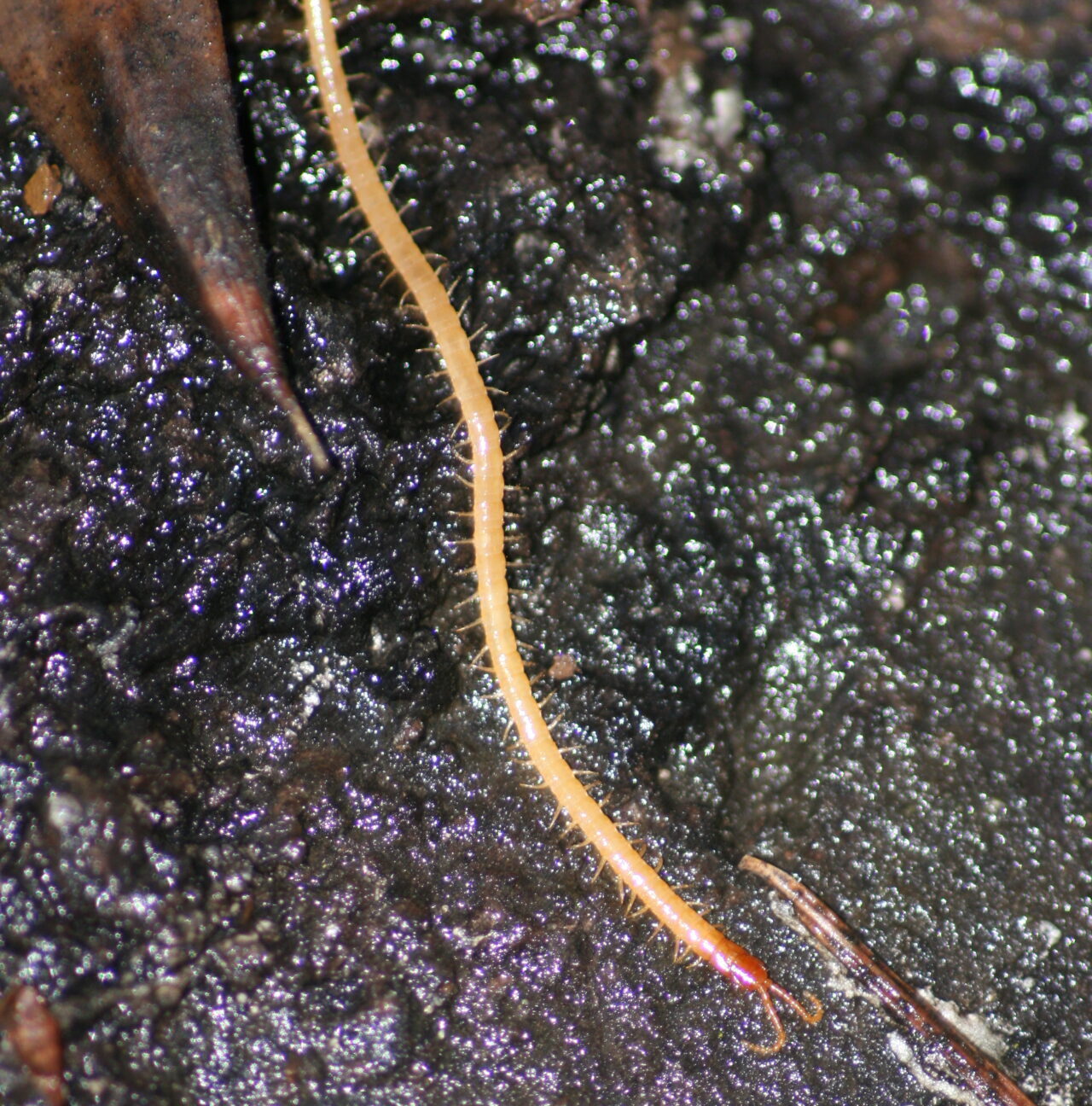Go ahead and get a little batty if you want to control filbertworms in your hazelnut orchard. Since bats eat night-flying insects, including the filbertworm moth, attracting them to your orchard is a beneficial and organic way to help control filbertworm population. Give bats a place to call home by installing bat boxes.
The Oregon Organic Hazelnut Co-op (OOHC) sponsored a filbertworm presentation at the Nut Growers Society Summer Tour in Albany, Oregon. Two of the four-member panel of experts had opposite results with bat boxes. Linda Perrine put up boxes, but never had a single bat move in. Kirk Reinecke had better results. He went online to search out plans, and then built his own boxes, which the bats sleep in during the day.
Groundcover going into winter can create increased filbertworm, (Melissopus latiferreanus Walsingham) populations, since debris on the orchard floor creates a habitat for the overwintering larval stage. Overwintering larvae are called hibernacula, “This describes the larva in its protected case which is woven from silk and debris,” said panelist Betsey Miller, an Oregon State University (OSU) Fruits and Small Nuts Research Assistant.
It’s hard for the larvae to overwinter in extremely wet soil.
Flailing is an important aspect for organic control of filbertworm. Flail thoroughly and often: Give orchards a flail in the spring to remove debris; flail after initial nut drop to destroy larvae—a ½ inch long, cream-colored worm with brown head that lives inside the shell and eats the kernel; flail all nuts if not picking.
Panelist Taylor Larson said there have been studies done using fire in hazelnut orchards in the early to mid-fall to control filbertworm larvae. “Permitting is the issue,” he said.
One grower from the audience shared how he uses pigs to help clean up his orchard. He puts up hot wire stands and releases about 30 pigs at a time into the orchard. When the pigs have cleaned up one area, he moves them to another. He later sells the pigs, and raises a new batch the following year.

Mating Disruption
Using mating disruptor pheromone is useful for maintaining a low filbertworm population. It’s a good method to keep the insects in check, but it’s not as helpful if there is already a large population of filbertworm moths in the orchard. When large quantities of moths are present, they could still flutter upon one another by chance.
“Pheromone is heavier than the air, so it will sink in sloped areas,” Betsey said. About the pheromone dispensers, she said. “Put them up into the top one-third of the canopy.”
Other advice from OSU extension service about organic control of filbertworm: Use monitoring traps to keep tabs of insect levels in the orchard. Place these traps up into the top one third of the canopy as well. Use four traps for the first 10 acres. Use one trap per each additional four acres. If you count two to three filbertworm moths per trap, or five filbertworm moths in any one trap, it’s time to take action. Side note: Very early moth flight may not be a threat to crops, especially if there are no nuts yet developing.
Other moths will also fly into the traps. To identify the filbertworm moth, look for a small moth with gold scales on the wings. “They are approximately 1 cm from head to wing tip with an 1.8 cm wingspan. The golden bands along their wings are distinct markings; they have a metallic shine in the sunlight,” Betsey explained.
OSU Extension advice when using pheromone, or mating disruptors: The Meso dispensers/rings work best in orchards of at least 10 acres in size, and in those with more “core” than “edge.” Follow the label recommendation of 20-plus dispensers per acre. It’s best to hang them before bud break. Dispensers are easier to hang at that time of the year. Also, they’ll be in place before the first flight of the moths, which can happen as early as mid-May. The orchard canopy helps hold the pheromone in the orchard.
Not seeing moths in your traps? Don’t worry, that’s actually good news. The pheromone point source is the trap, which is releasing a cloud of pheromones. The pheromones emitted imitate those given off by female moths to attract mates. If the male moth can’t find the trap, it means he’s confused by the pheromones and likely can’t find the female moth, either. It’s a sign that mating disruption is working.
Linda used Entrust for nine out of ten years to control filbertworm and other insects that overwinter. The active ingredient in Entrust is Spinosad. Use 10 fluid ounces per acre at egg hatch. The year Linda tried a different product wasn’t as good a production year for her. But she has concerns about using the same spray year after year. “We are going to build up resistance if this is the only product we have to use.”
Hazelnut susceptibility to the filbertworm is based on shell thickness. Thinner-shelled varieties such as McDonald, Wepster, Dorris, Yamhill, Willamette and Sacajawea are more susceptible. Jefferson and Polly O are in the middle of the road, as far as shell thickness and susceptibility goes.
As for cost, mating disruption is comparable in cost to that of chemical spray management of filbertworms. Some growers choose to use mating disrupter pheromone in the orchard and use conventional full-coverage insecticide spray along the border, whether growing organically or conventionally. Linda discourages organic growers from using conventional spray in the border. She sited climate change and an already large decrease in insect populations as the reason.
In at least two studies, there was no difference shown in crop damage between mating disruption plots and grower standard plots. However, filbert aphid counts were higher in the grower standard plots, and beneficial parasitic aphid wasp count was higher in the mating disruption plots.
Other takeaways from the OOHC presentation, which took place at the Linn County Fair & Expo Center:
With climate change comes hotter, drier summers. To help maintain moisture in the root zone of trees, use compost or wood chips.
Organic Bud Mite Control Session
Linda said she’s had a 5 to 10 percent reduction of nuts due to bud mites.
Mite infested buds do not produce nuts and can cause abnormal vegetative growth. Bud mites are a nearly translucent, microscopic insect shaped like a cigar. They live and feed inside new buds, damaging or “blasting” the buds, which swell (bud gall), dry up and drop off. The mites then migrate from the blasted buds to new buds in the spring. If using either a conventional or an organically-certified spray to control bud mites, this is the time to apply. Mite migration generally happens in late-March through early April and into May in Oregon’s Willamette Valley.
There are two varieties of mites that feed on hazelnut leaves, flowers and catkins, (Phytocoptella avellanae and Cecidophyopsis vermiformis). As nature would have it, there is also a variety of beneficial mite, (Galendromus spp). This cannibalistic beneficial mite lives among, and feeds on the damaging mites, as well as on spider mites, which also cause hazelnut damage. Unfortunately, release of predatory mites may not be practical, or cost effective, in a commercial setting.
Some of the legacy varieties of hazelnuts are the most susceptible to bud blast—Daviana, Ennis and Royal, although mites are not common in the catkins of the pollinizers Daviana and Royal. The OSU breeding program selects against bud mites, so although blasted buds are fairly rare in recent cultivar releases, severe infestations have been noted in Casina, Clark, Lewis and Yamhill. Barcelona, which is susceptible to Eastern Filbert Blight, is not susceptible to bud blast.
Monitor for mites with tacky insect glue, sticky cards or double-sided sticky tape. Place sticky monitor traps on branches below blasted buds. Since the mites cannot be seen with the naked eye, use magnification to count them regularly.
Mite flare ups could be linked to uses of broad-spectrum insecticide, causing a loss of biological control.
Organic Aphid Control Session
“Aphids are a lover of moisture,” Linda said.
There was also talk about the aphid parasitoid—or parasitic wasp (Trioxys pallidus). It was imported to the US in the 1960s. The adult wasp is very small, only 2-3 millimeter (mm) long. It has a shiny black head and thorax. Its abdomen is long, slender and orange or yellowish in color.
The adult wasp lays an egg inside an aphid nymph. The egg hatches. The larvae feasts on the inside of the aphid. It pupates inside the aphid shell, or mummy, then emerges as an adult wasp through a small exit hole in the mummy.
Although the wasps are challenging to spot and identify, you can monitor their numbers by counting the aphid mummies in your orchard. To protect the tiny predator, Betsey said, “It’s important to spray as little as possible.”
“Let the natural biology process take care of it,” Linda said about aphid populations.
If you do feel the need to spray, Impede is a certified organic product with a sticker, which helps keep it on the leaves through the next rain. Apply it in late February through early March.







